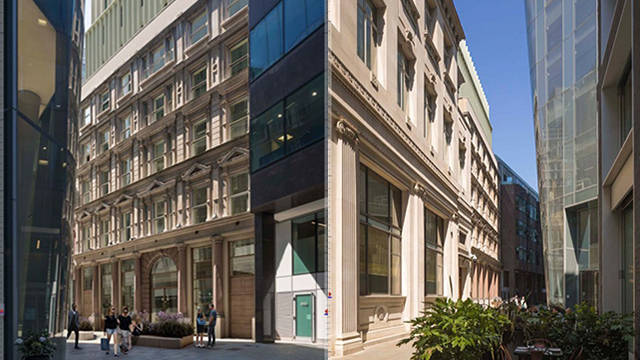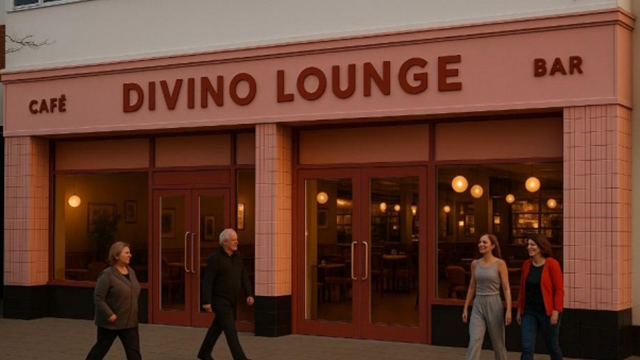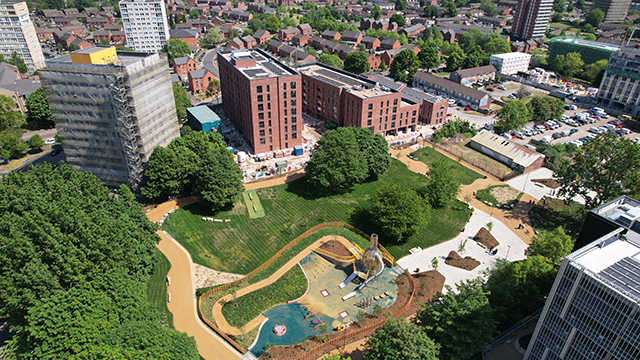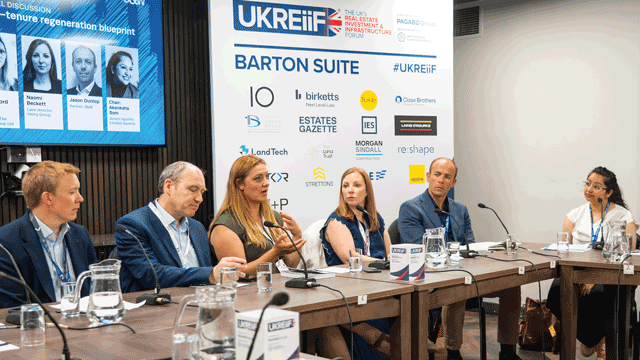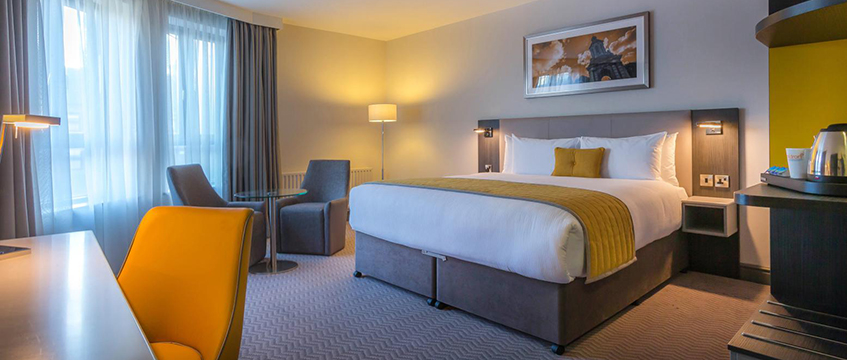The Zit, the Pock Mark and the two mighty Carbuncles – these are the kind of prizes an office developer does not want to win.
Inspired by the Prince of Wales’s notorious 1984 description of Richard Rogers’ proposed National Gallery extension as a “monstrous carbuncle” on the face of London, these darkside awards are now almost as much a part of the national architecture and design scene as RIBA’s Sterling Prize.
But does winning one blemish a building’s reputation? Do occupiers always steer clear of the reputational damage associated with a national eyesore?
Scotland’s Carbuncle Awards are the granddaddies of all bad building awards. For the past 15 years they have been naming and shaming architecturally uninspiring towns and, through the Zit Building Awards, picking at unattractive edifices.
Nominations for the 2015 Zit flooded in like teenage hormones: the office extension to the Holyrood parliament building looked like a strong contender, but was eventually trounced by the new eastern extension to Edinburgh Airport.
The winner of the main Carbuncle was Aberdeen, which beat off stiff competition from the likes of Cumbernauld, East Kilbride and Leven to win the award nobody wants for Scotland’s most dismal place.
John Glenday, Glasgow-based architectural writer and the proud father of the blemished building awards, says 15 years of picking has had a salutary effect.
“It has been positive,” he says. “Of course the campaign is a bit tongue-in-cheek, but it adds to awareness of what has gone wrong, and that is important because outside architecture, design and property, there is often a disconnect between the people who design buildings and those who occupy them.”
Glenday calls for more opportunities for people to have their say and an influence on the design and placing of buildings because, he says: What we want to see are better buildings and better towns.”
There is evidence that the awards have beneficial effects Glenday insists – even if winning one may be painful. He points to Denny, the Stirlingshire town awarded the Carbuncle in 2010, a move that inspired the demolition of some much-hated local landmarks. He says Aberdeen’s design boil could also be lanced following its 2015 win.
“Unfortunately, we are too late to halt Muse Development’s Marischal Square office scheme, but I think the award has galvanized local people, who have launched an Aberdeen Beautiful campaign to prompt the council into action.
“Office occupiers probably don’t care much about design – but if they don’t it’s a mistake because quality office space is vital for productive staff. If you put people into a grey box, you get grey people.”
Glenday blames very short-term design “barely looking to building lives of 10-20 years, let alone a century ahead”.
Is he right that occupiers are not too fussed by carbuncles? Jeremy Bates, head of office agency at Savills, says his data suggests looks are a lot less important that location.
Bates says: “World-renowned architects have produced inefficient buildings that are not commercial successes. But a value-engineered exterior can come with a fantastically appealing inside, and perform well. So it cuts both ways. Over my 30 years of experience, it is the internal space that is key for occupiers in appraising one building against another.
“Things like the Carbuncle Cup comment on one dimension of a building – the exterior – when there are so many factors that count, like usability and location – and those issues count even for unappealing carbuncles.”
For Bates, the danger is neither outstandingly iconic buildings on one side, nor ugly carbuncles on the other, but the impetigo of mediocrity in the middle. “For the past few years the office development market has been about financial viability – which has had a massive effect on appearance,” he sighs. Bates says the current cause of exterior blandness is “value engineering”.
He says: “Value engineering questions anything flamboyant or characterful and you end up with square boxes, suitable for right-angled furniture.”
Proof of Bates’s point may come from another former Carbuncle winner – not the Glasgow-based award, but its rival, the London-based Carbuncle Cup.
In 2011, Salford’s Media City development won the cup, causing momentary embarrassment to developer Peel and anchor tenant the BBC.
“The BBC actually wanted interchangeable boxes inside, because it met their needs. And form follows function. So perhaps you end up with bland carbuncles?” says Bates.
If being labelled a carbuncle meant serious reputational damage then Salford’s Media City would be shunned by other occupiers. In fact, it is doing rather well. The latest Media City signing is healthcare giant Bupa, which signed a 15-year agreement with landlord Peel to take the neighbouring Regent site for a 145,000 sq ft development. Work on site could begin next year.
Cushman & Wakefield, which advised Bupa, preferred not to talk about the carbuncle effect. But Mark Canning, partner at Canning O’Neill, is a long-time participant in the Salford Quays scene. He says: “Technically speaking, Bupa is not taking space in MediaCityUK – at least, not the existing development that won the Carbuncle Cup. It is having new offices built for it at Harbour City – a site owned by Peel next to MediaCityUK.
“The point is that Bupa has not chosen to go into the existing MediaCityUK buildings that have been criticised for design, but into a bespoke design-and-build scheme that happens to be a Peel scheme, and it is likely that Bupa will have some input on design.”
Canning says occupiers are pragmatic about design issues. “The degree to which the external image/design of an office building matters depends on the use it is being put to. So an image-conscious occupier looking for an HQ-style building is going to be far more concerned with external appearance than a call centre occupier whose clients never visit the building. Both may want the building to perform to the same standard in terms of specification and functionality, and both may have similar location criteria, but one will be more concerned with external image than the other.”
Canning says: “Award-winning design is a ‘nice to have’ but I am not convinced this is top of occupiers’ priorities and a landlord with a fully let ‘ugly’ building is going to be more content than the landlord with the empty building and only a mantelpiece full of awards to show for it. That said, a building may not win architectural awards for appearance, but still win awards in terms of innovation.”
Nobody wants to win a Carbuncle, a Zit or a Pock Mark. But while winning a Carbuncle might cause a bit of pain, it does not stop gain. Tenants will still come, rent will still be paid. In the end, a minor blemish may add to characterful appeal as a zit turns into a beauty spot.
Blemished Aberdeen?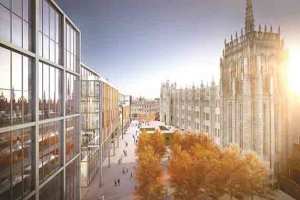
A 175,000 sq ft Aberdeen office development is anxious to distance itself from the city’s 2015 Carbuncle win.
Confusion over the purpose of the scheme – widely but mistakenly thought to be a shopping centre – and the release of some unhelpful images, have not helped improve the design atmosphere.
The Aviva Investors-funded Muse Development of Marischal Square attracted a by-blow from Carbuncle founder John Glendale. The £107m scheme’s cheerleaders are anxious to avoid a dispute, but insist a long public consultation means it is no eyesore.
A spokesman told EG: “We engaged with more than 4,000 people during the consultation, which reduced the height of some buildings and increased the open space. So we have listened and have improved views of the historic buildings of Aberdeen from inside the scheme.”
The development, due for completion in 2017, centres on the 469-year-old Provost Skene’s House, as well as the full pedestrianisation of a section of Broad Street. The plans also include 250 car-parking spaces, and a 125-bed hotel – the Residence Inn by Marriot hotel.
But local critics were under the impression it was to be a shopping centre – and had been confused by some early images.
Steve Turner, regional director Scotland at Muse Developments, said in January: “It is disappointing that the poor-quality, unauthorised and spurious images released earlier this month have caused concern around the Marischal Square development for people living and working in Aberdeen, and those who are interested in the project’s impact on the city.
“Marischal Square will show respect to the city’s granite tradition, as well as the beauty and artistry of the Marischal College building and the warm public affection for Provost Skene’s House. The public made those views clear to us in the project consultation phase, and we and Aberdeen city council have made a number of alterations to the original drawings and plans to reflect that.”




